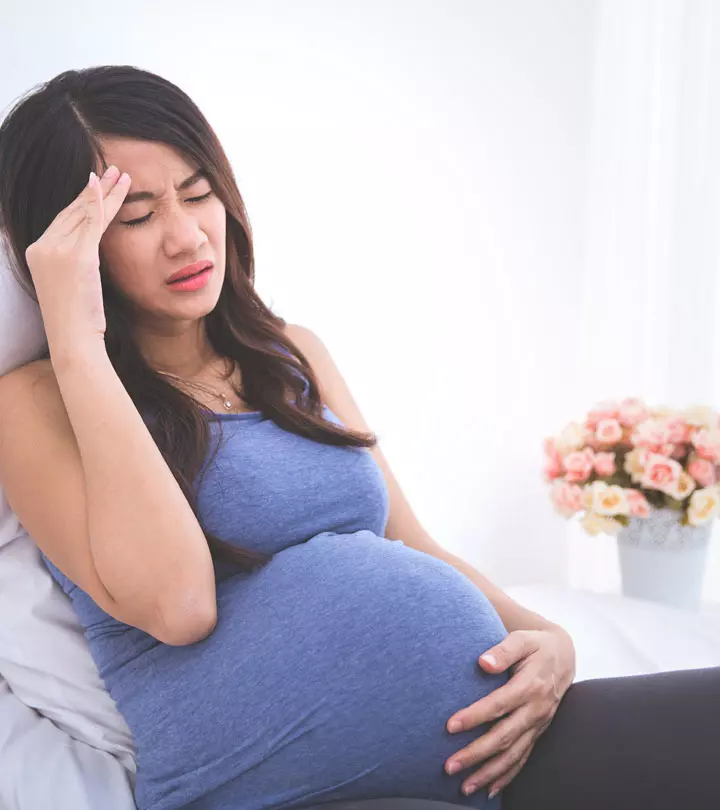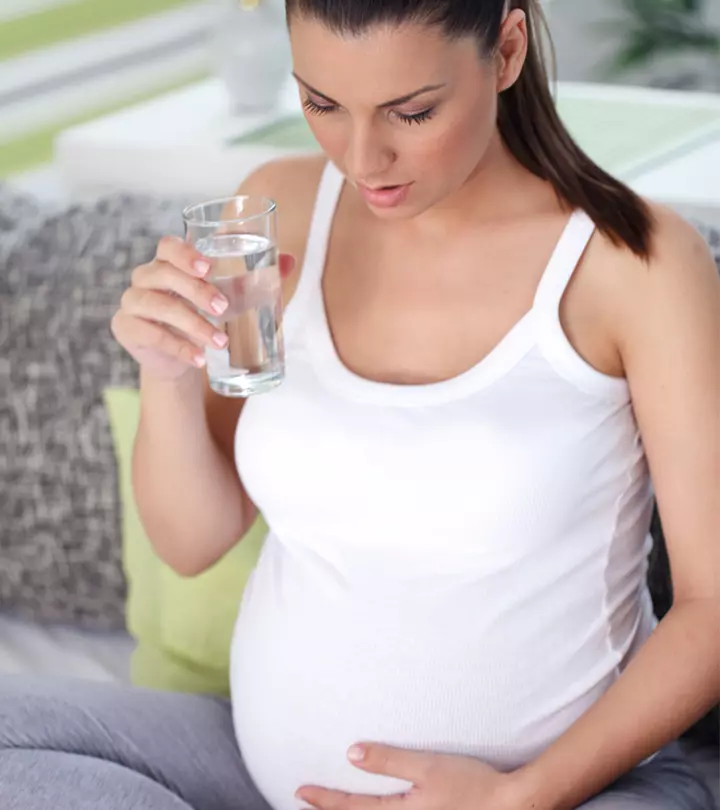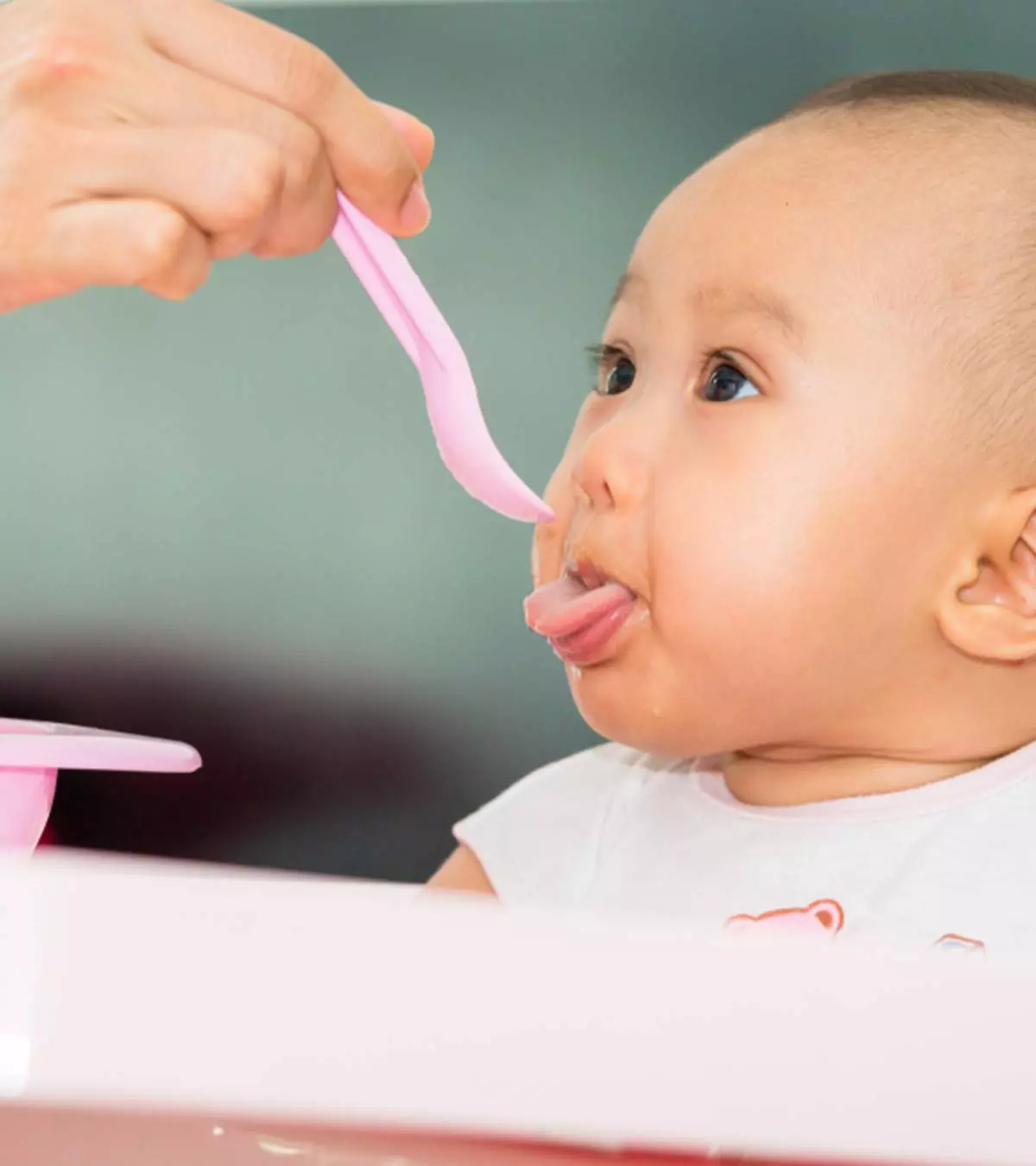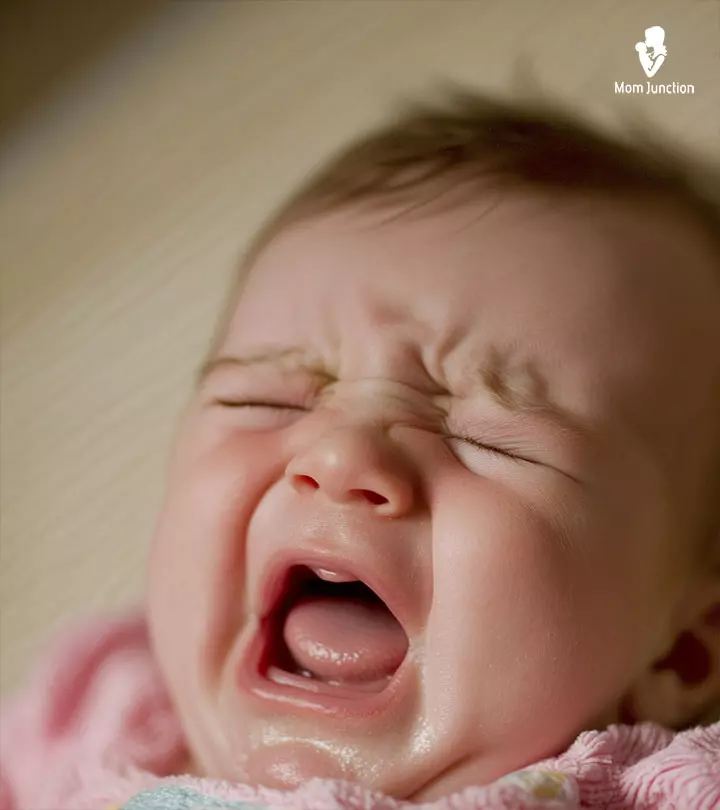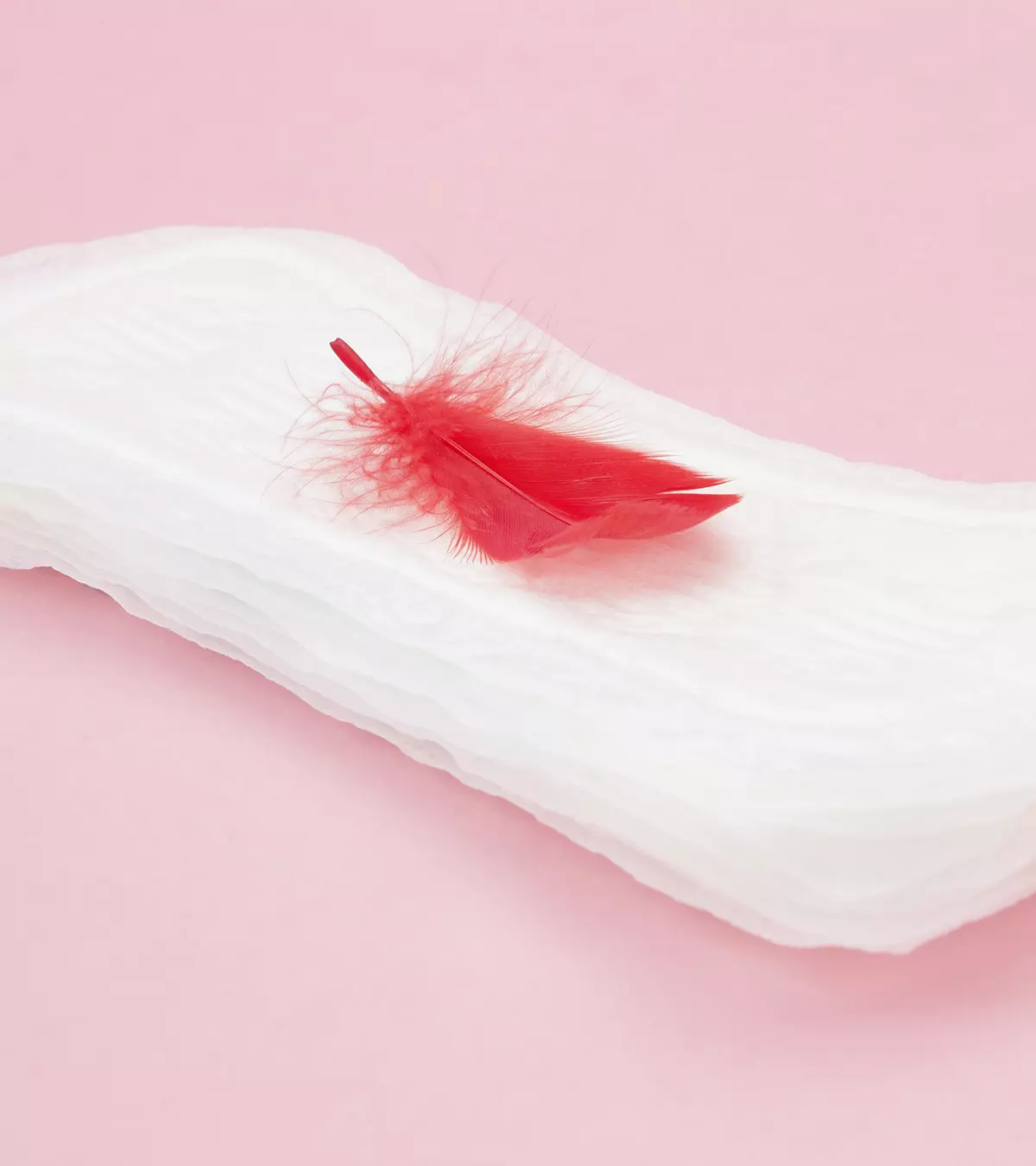
Image: Shutterstock

Ovulation bleeding is characterized by light bleeding or spotting during or around ovulation. Not all women experience it. According to a study, about 4.8% of women experience light spotting or bleeding right in the middle of their menstrual cycles (1). In this post, we tell you what ovulation bleeding is, the possible causes, and some other signs and symptoms of ovulation. When you know how to identify ovulation bleeding, you can get medical attention in time and manage any underlying condition before it worsens.
In this post, we tell you what is ovulation bleeding, its possible causes, and some other signs and symptoms of ovulation.
Key Pointers
- A small amount of bleeding or spotting during ovulation is quite common.
- Estrogen levels drop during ovulation, causing the uterine lining to weaken and shed tissue, resulting in bleeding.
- But spotting cannot be considered a surefire sign to confirm fertility.
Is Bleeding Or Spotting During Ovulation Normal?
Yes, spotting or bleeding during ovulation can be quite normal for some women. It can happen at different times during the cycle and due to varying reasons. There is no sure way to know if what you are experiencing is menstrual spotting or implantation bleeding.
Possible Causes Of Bleeding During Ovulation
Although there could be many probable causes for ovulation bleeding, there are two known reasons that certainly result in bleeding or spotting during ovulation (2):
A drop in the estrogeniA sex hormone responsible for the development of female sexual characteristics. levels during ovulation makes the uterine lining to decrease in thickness and shed the tissue. This could result in bleeding from the uterus around the time of ovulation.
When the egg is released, the ovaries rupture and bleed, letting the blood pass through the follicle tubes.
Other reasons that cause bleeding or spotting during ovulation are as follows:
| Type of risk | Reasons |
|---|---|
| Low-risk | First period Trying new contraceptives Taking birth control pills irregularly Vaginal dryness Delayed ovulation Vaginal infections like candida or bacterial infection |
| Low to medium-risk | Vaginal injury/ inserted an object into the vagina (retained tampon) |
Impregnation Medium-risk Low thyroid levels
Pregnancy loss
Intake of anticoagulantsiChemicals or medications that prevent blood from clotting.
Cervical polypsiTiny, elongated tumors that develop on the cervix, causing vaginal bleeding and a foul smell. or erosion
Impending miscarriage, or had an abortion recently
Polycystic ovary syndrome (PCOS)
Cervical/ vaginal infection Medium to high-risk Sexually transmitted diseases (STD)
Ovarian cyst
Uterine fibroidsiAbnormal benign growths in or on the uterine wall.Polyps
AdenomyosisiThe condition where the uterine tissue lining penetrates the uterine wall resulting in an enlarged uterus. High-risk Pelvic inflammatory disease (PID)iAn infection of the female reproductive organs caused by STDs and other infections resulting in lower abdominal pain.
Ectopic pregnancyiA pregnancy in which the fertilized egg develops outside the uterus.Cervical/ vaginal/ uterine cancer
What Does Ovulation Bleeding Look Like?
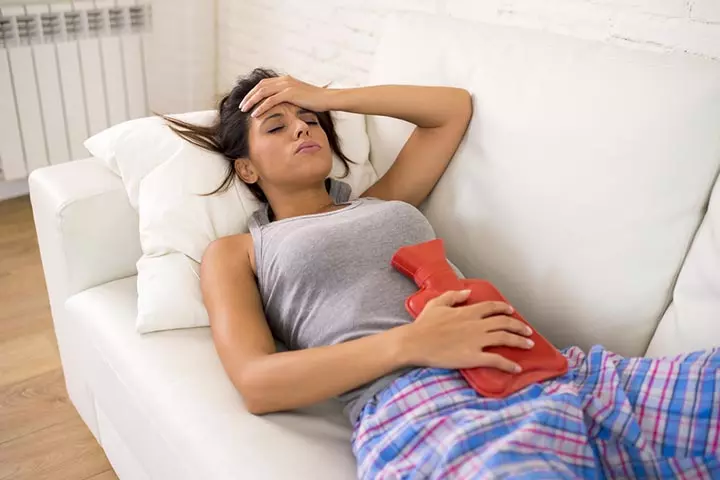
Ovulation bleeding is lighter than menstrual bleeding (and menstrual flow), and it is either light pink or dark brownish red. It accompanies cervical mucusiA watery or gel-like secretion from the cervix that aids in the motility of the sperm and protection of the cervix. and mild pain similar to menstruation.
Is Ovulation Bleeding Or Spotting A Sign Of Fertility?
Though ovulation bleeding or spotting can be a positive sign, not every woman experiences it, and therefore cannot be a reliable sign of fertility. Understanding your ovulation by tracking the dates (fertility tracking) or using ovulation predictor tests is a better way to know. Indulging in sex when you are closer to ovulation will increase your chances of conception.
When Does Ovulation Spotting Occur?
Ovulation spotting usually occurs before, after, or during ovulation, which is anytime between 11 and 21 days after the first day of your last period. It might also happen sooner or later depending on the length of the menstrual cycle (3).
Other Signs And Symptoms Of Ovulation
Ovulation spotting may or may not occur, but the other ovulation symptoms may include (4):
- Increased cervical fluid that looks similar to egg white
- Cervical changes especially its position and firmness
- Changes in basal temperature of the body
 Quick tip
Quick tip- Dull pain at one side of the abdomen
- Increased libido
- Breast tenderness
 Quick fact
Quick fact- Higher levels of luteinizing hormones measured with ovulation test
- Bloating
- A heightened sense of smell, taste, and vision
Recalling her experience with ovulation bleeding and its symptoms, Joanna, a vlogger, states, “I was getting a lot of weird stomach pains in the lower abdominal area, and that was followed by ovulation bleeding. My stomach wasn’t feeling very normal. I wasn’t feeling very good, and then when the ovulation bleeding started, I was extremely concerned. I just thought that I was just getting my period extra early, but the period never truly started.”
She further explains how she has been managing her ovulation bleeding, saying, “I try to live a more active and healthy lifestyle. I cut out spicy food, dairy, and alcohol. I manage stress levels by walking, going to the gym, journaling, and meditating (i).”
 Point to consider
Point to consider
If you notice these signs, know that you could be ovulating and that it is the right time to try to conceive.
If bleeding or spotting is the only symptom you notice, then you may not know whether it is ovulation spotting or implantation spotting or menstrual period. Knowing the difference helps.
Ovulation Spotting Vs. Implantation Spotting
| Ovulation spotting | Implantation spotting |
|---|---|
| Estrogen level changes or egg is released, rupturing the ovary and causing spotting | When a fertilized egg implants in the uterine lining, spotting occurs |
| Sign of fertility | Early sign of pregnancy (6) |
| Happens around 14 – 15 days before menstrual due date (in a regular cycle) (5) | Happens one to three days before the menstrual due date |
Ovulation Spotting Vs. Period
| Ovulation spotting | Period |
|---|---|
| Lighter flow | Heavier flow that needs a pad, menstrual cup or tampon |
| Pink, reddish or brown, occasional discomfort | Pink, reddish or brown, possible associated pain |
| Lasts for one to two days | Lasts around five to seven days (7) |
When To Consult A Healthcare Provider
While ovulation bleeding may not be overly concerning on its own, you may seek medical consultation if you experience the following symptoms (14) (15).
- Prolonged heavy bleeding
- Severe abdominal pain
- Unusual vaginal discharge
- Bleeding after intercourse
- Nausea, fever, or lightheadedness
- Bleeding after menopause

To increase the chances of conception, it’s important to be aware of your fertility window. Since ovulation bleeding indicates fertility, it is the right time to try and conceive. Getting confirmation from the doctor that mid-cycle bleeding is not a complication, and is a sign of ovulation could help you determine the right time to have sex, to increase the chances of pregnancy.
 Quick fact
Quick factWhen Should You Take A Pregnancy Test?
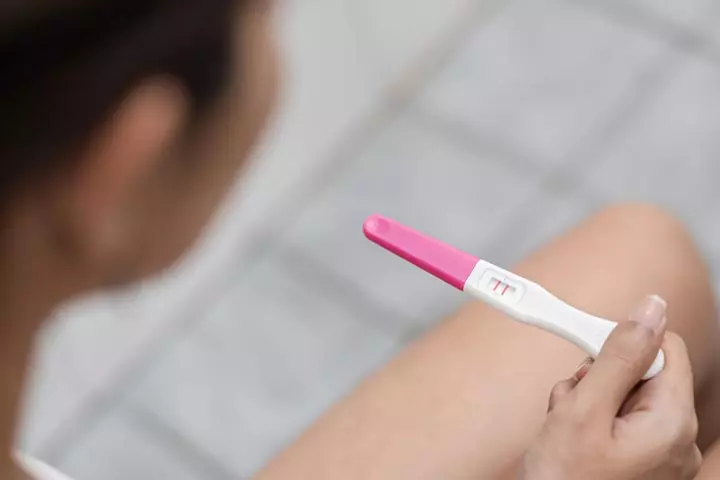
You may take a home pregnancy test around a week after you miss your period. This would be around 20 days after ovulation bleeding.
A pregnancy test detects the amount of hCG (human chorionic gonadotropin) in urine. During early pregnancy, hormonal levels are initially low, but they eventually increase rapidly due to hormonal changes. Therefore, taking the test too soon can result in a false-negative. If the test results appear favorable, consider an appointment with your gynecologist to confirm your pregnancy.
Next, we answer a few commonly asked queries on ovulation bleeding.
Frequently Asked Questions
1. How long should ovulation bleeding last?
Ovulation bleeding usually lasts for a few hours to a day, but in some women, it may extend to two or three days (8).
2. Does ovulation bleeding mean you are pregnant?
Ovulation bleeding in the middle of the menstrual cycle does not mean you are pregnant. It means you might be fertile.
3. What if you experience severe bleeding while ovulating?
Severe bleeding and pain for more than one cycle could indicate a complication such as endometriosisiA condition where tissue similar to the uterine lining (endometrium) grows outside of the uterus. , irritable cervix, or polyps in the uterus. Doctor consultation and follow-up tests will help in getting the right diagnosis.
4. Can brown spotting during ovulation indicate the right time for conception?
Brown spotting during ovulation could be an ideal time for you to conceive (4). But, if you also have any vaginal irritation along with brown spotting, it could suggest a pathological issue.
5. Can ovulation bleeding be treated?
It does not need to be treated if ovulation bleeding occurs without any underlying health issues or accompanying symptoms. Otherwise, treatment depends on the causative condition.
6. Is it possible to get pregnant during ovulation bleeding?
Ovulation bleeding usually indicates that an ovum has been released; therefore, it is the right time to get pregnant.
7. Is it possible to have ovulation bleeding twice in one cycle?
A study shows that women may ovulate twice a month. Therefore, ovulation bleeding may occur twice in one cycle (13).
8. How can I manage ovulation bleeding?
Ovulation bleeding may be managed by tracking the onset of your menstrual cycles and ovulation windows, following a regular fitness regime, consuming a balanced diet, and ensuring adequate hydration. Your gynecologist may also prescribe hormonal contraceptives and oral supplements to enhance your uterine health and stop the bleeding (14) (15).
Ovulation bleeding may be confused with period bleeding if you are unaware of the subtle yet distinctive signs and differences. Ovulation bleeding differs from period bleeding in its color, flow, and occurrence time. This bleeding or spotting is normal in some women and can be a good indication of fertility, allowing you to plan your intercourse for a successful pregnancy. However, it may also indicate an underlying issue. Therefore, it is important to keep track of your menstrual period dates. If you experience abnormal or irregular bleeding, consult your healthcare provider to determine the cause and manage the condition. Reproductive health issues require timely and appropriate attention, and seeking medical advice can help prevent further complications.
Infographic: Low-Risk Reasons Behind Occurrence Of Bleeding During Ovulation
Ovulation is a fertile window that occurs 14-15 days before menstruation. However, some women may also have spotting or bleeding during this time. Check out the infographic below to learn about the various reasons that may cause ovulation bleeding.
Some thing wrong with infographic shortcode. please verify shortcode syntaxHave you also experienced mid-cycle bleeding? Share your experiences with us in the comment section below.
Illustration: Ovulation Bleeding: Is It Normal? Causes And Symptoms

Image: Dall·E/MomJunction Design Team
Personal Experience: Source
MomJunction articles include first-hand experiences to provide you with better insights through real-life narratives. Here are the sources of personal accounts referenced in this article.
i. How I healed my ovulation bleeding (and sanity);https://www.youtube.com/watch?v=fKzCKWfiPaw&feature=youtu.be
References
1. S. S. Dasharathy et al.; Menstrual Bleeding Patterns Among Regularly Menstruating Women; Am J Epidemiol (2012)
2. K. A. Oriel & S. Schrager; Abnormal Uterine Bleeding; American Academy of Family Physicians (1999)
3. Karen Clark et al.; Open Cycle: Forecasting Ovulation for Family Planning; SMU Data Science Review (2018)
4. Kaitlin Penley; Fertility Diet: Increase Your Chances of Getting Pregnant
5. The timing of the “fertile window” in the menstrual cycle: day specific estimates from a prospective study; BMJ (2000)
6. What are some common signs of pregnancy? NIH (2017)
7. Menstrual Cycle: An Overview; The Children’s Hospital of Philadelphia
8. Narendra Malhotra et al.; Jeffcoate’s Principles of Gynaecology; page 719
9. How can I tell when I’m ovulating?; NHS
10. Ovulation Symptoms: Breast Tenderness; Nordica Fertility Centre
11. Does the salivary fern pattern determine fertile period in reproductive female?; Clinical Epidemiology and Global Health
12. Ovulation and Conception; The Women’s
13. Owen Dyer; (2003); Women may ovulate two or three times a month.
14. Ovulation Bleeding – Causes, Symptoms & Treatment Options; Narayana Hrudayalaya
15. Ovulation Bleeding: Causes, Types, And What We Can Do?; Tagore Hospital & Research Institute
Community Experiences
Join the conversation and become a part of our nurturing community! Share your stories, experiences, and insights to connect with fellow parents.
Read full bio of Dr. Anita Gondy
Read full bio of Rebecca Malachi
Read full bio of Dr. Ritika Shah
Read full bio of Reshmi Das








